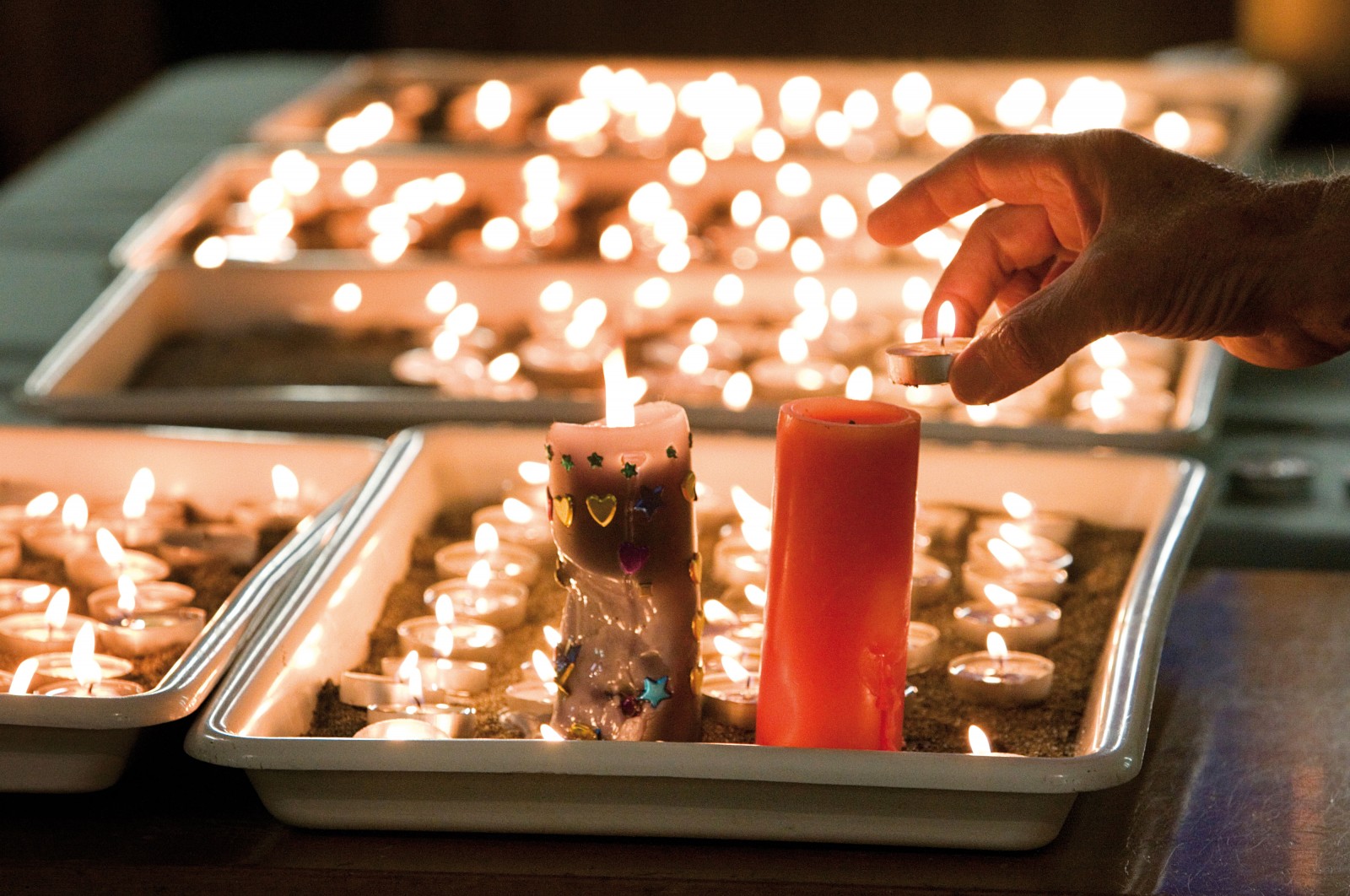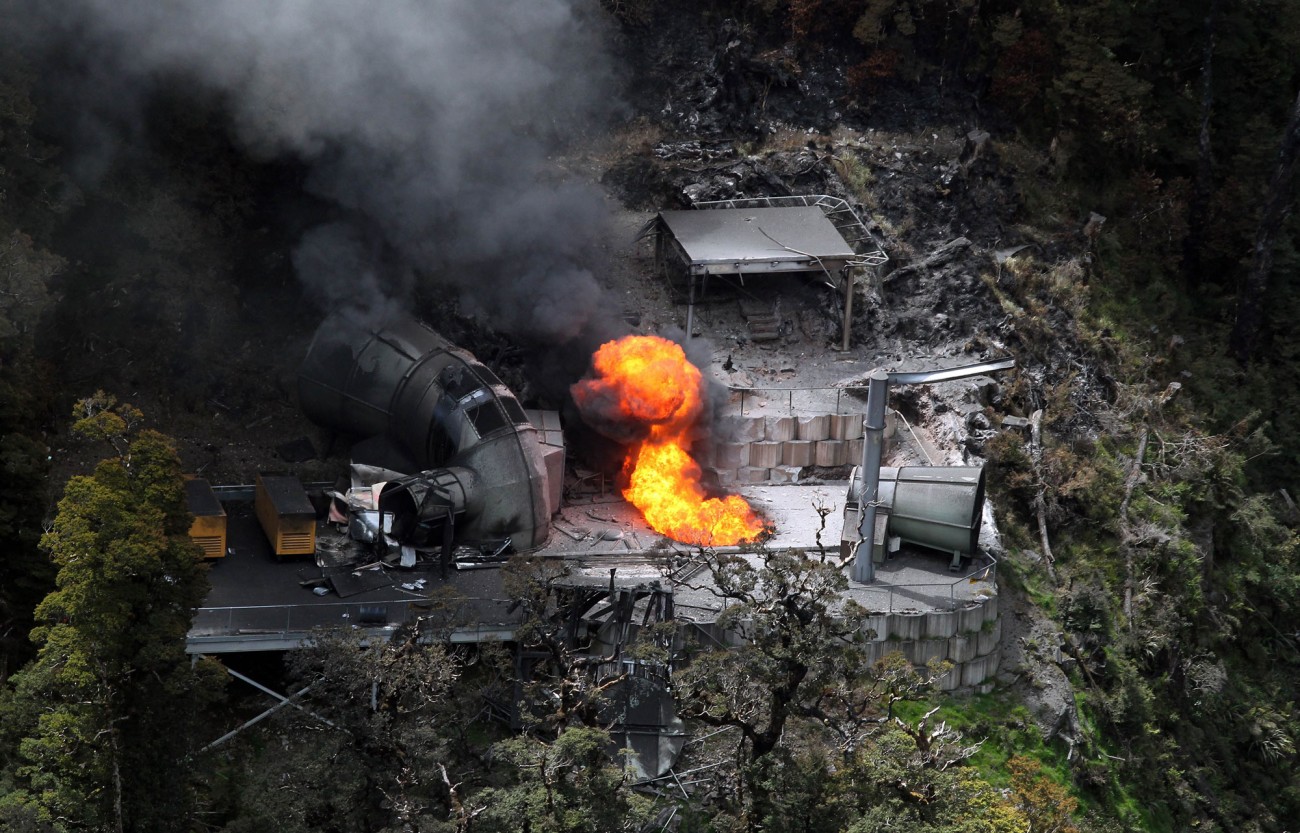
A time to remember, a time to question
As we honour and mourn those lost in the Pike River tragedy, we also consider the future of underground coal mining in New Zealand.

In 2004, I wrote a Geographic story about the new face of coal mining—the rise of “boutique coal”, particularly the high-quality, low-impurity West Coast coal that was revitalising the industry and putting a smile on the faces of investors.
On the way to a mine visit at Blackball, I stopped by the miners’ memorial at Brunner, site of the country’s worst industrial accident. A little over a century ago, 65 men lost their lives in a tragedy similar to the one that rocked the country last November at Pike River, 25 km to the north. A build-up of firedamp (the old-timers’ name for methane) led to an explosion that ripped through the tunnels of the mine like a bullet through a rifle barrel.
The centrepiece of the Brunner memorial is a statue of a miner carrying a traditional Davy safety lamp and leaning on his round-headed banjo shovel. His stone-hewn face bristles with a thick walrus moustache and he seems to squint stoically at the world beneath his cheesecutter cap. A bouquet of fresh flowers lay on the plinth, a tribute from an earlier visitor. Seeing the splash of living colour on grey concrete, I was struck by the realisation that, a century on, the bitter gall of this tragedy is still tasted on the coal Coast, where memories are long and loyalties fierce.
This nameless nineteenth-century miner, keeping watch beside the main highway from Greymouth to Reefton, is an emblem of old coal, the fuel of Western civilisation, hacked out of the ground by men “blackened to the eyes, with their throats full of coal dust, driving their shovels forward with arms and belly muscles of steel”, as George Orwell wrote in The Road to Wigan Pier.
His modern counterpart deals with coal in a very different way. The shovel he drives is a scoop on the end of a loader, or the whirling cutters of a roadheader, or the high-pressure jets of a hydraulic miner. If he’s a West Coaster, the coal he wins from the pliant earth is likely to end up in the steel mills of Asia and the factories of Europe, not the fireplaces of Hokitika or the boilers of Huntly.
But in other respects these men, a century apart, are the same stock, the same blood: brothers of the black seam.
And they face the same deadly risks, inherent in the geology of this tumultuous, fault-ridden landscape. The invisible enemy is methane, the gas that leaks into the miners’ tunnels like a vapour from Hades. A century ago, it was detected as a blue halo around the flame of a safety lamp. Today, methane is measured electronically, but it can sneak like a ghost into the workings, or burst out suddenly and unpredictably through weakened coal faces. In such cases its accumulation to explosive levels (5–15 per cent of the mine atmosphere) happens so rapidly that miners may have little time to escape.

When Brunner exploded, eyewitnesses said the sound was like artillery fire. The velocity of the blast is estimated to have been 1000 metres per second. Seeing black smoke coming out of the portal, the mine manager and engineer rushed underground, only to succumb to afterdamp, the asphyxiating cocktail of carbon monoxide, carbon dioxide and nitrogen that follows combustion. Other miners, bound by a code that demands a miner go to the aid of his fallen mate—a code that was over-ridden at Pike River, to the frustration and fury of many—found the pair unconscious and carried them out. And thus proceeded the recovery: miners going in to bring out the bodies of the dead, only to be stretchered out themselves when they suffocated in the toxic air. Such was the determination of the rescuers, some of whom ran 20 km from Blackball when they heard the news, that as soon as they revived above ground, they headed straight back into the mine, until all the men caught in the blast were accounted for. None had survived. (John Roberts, the underground manager, had three sons with him in the mine that day, the youngest a boy of 15. What private hell must his wife have endured in the days that followed?)
Orwell, writing of Britain’s coal economy, said that in the metabolism of the Western world, the miner was second in importance only to the farmer who ploughs the land. “Their lamp-lit world down there is as necessary to the daylight world above as the root is to the flower,” he wrote. That may have been true in the 1930s, but is a more debatable proposition today, when coal is branded by many as climate enemy number one, its economic benefits outweighed by its environmental costs—and, brought brutally back to the forefront of our minds, its human cost.
How much longer will we rely on this mineral with its Janus face—civilisation’s blessing and nature’s curse, bestowing wealth and stealing life?
Has an obsession with growth and our place in the economic pecking order blinded us to other realities?
Six months before the tragedy that unfolded on November 19, when the country weighed the merits of allowing mining on conservation land, Pike River was seen as the poster child of “new coal” with its “keyhole” extraction of a high-value mineral, its commitment to minimising its environmental footprint, its export-driven business model. “Pike River is destined to be New Zealand’s second largest mine,” enthused the company on its website. Yet it was laid low by a demon of old, the stalking scourge of the underground mine.
One of the pressing concerns in the aftermath of the accident is how that scourge is contained and nullified, and how underground mine safety as a whole can be improved. Over the past decade, the accident and fatality rate for the entire mining industry in New Zealand has been around 0.9 for every 1000 workers, similar to that of Australia. But for underground mining—even prior to this latest tragedy—our rate is worse. In terms of fatalities per tonne of coal extracted, New Zealand now ranks above China.
Underground mining is notorious for low-probability, high-consequence incidents. Between 1850 and 1998, 204 deaths occurred in coal mines from multiple-fatality incidents—one in five of the total 1096 deaths that occurred in the mining industry over that period. Multiple-fatality incidents have occurred on average every 13 years. Before Pike River, the most recent was at Mt Davy, a few kilometres north of Brunner, in 1998, when two men died in an accident involving an outburst of trapped methane. Solid Energy subsequently closed the Mt Davy mine, deeming it too hazardous to operate.

Yet underground coal mines are metaphorical gold mines, especially on the West Coast, where the glossy black lumps of bituminous and anthracitic coal fetch premium prices for such abstruse applications as activated carbon filters and molecular sieves. The Grey coal field, into which Pike River tunnels, is renowned for its “gassy” seams. Modern mine practice can theoretically mitigate the gas risk, but a crucial question that the various post-disaster inquiries will address is this: Do we need to change the way the industry is regulated?
New Zealand used to have highly prescriptive sector-specific regulations for the mining industry—with separate legislative acts for quarries and tunnels, metalliferous mines and coal mines—but these were replaced in favour of an across-the-board regulatory framework when the Health and Safety in Employment Act was passed in 1992. Various regulations for underground mines were reintroduced in 1996 and 1999, largely at the behest of mines inspectors who felt the industry was losing its safety edge, but the philosophical push remained for industry self-regulation. In 1998, there were seven inspectors with underground mining exerience; now there are two. As recently as 2008, none other than Pike River Coal’s chief executive, Peter Whittall, warned the Department of Labour that underground mining regulations were ambiguous and inadequate, that there were not enough mines inspectors and that they were not resourced well. He appealed to the department to promote a culture of “evaluation, consultation and education”.
In the wake of Black November, some will look beyond safety regimes and inspection systems and call for the country to step back from the “dirty coal” business and leave the carbon in the ground, just as we now leave its living progenitor—the forests—standing above. Coasters will scoff at any such notion. For them, coal is not just an economic mainstay but part of their identity. Indeed, West Coast historian Brian Wood, writing on the centenary of the Brunner disaster, says that Brunner helped to forge the Coast’s sense of solidarity and uniqueness, breaking down differences between the various immigrant groups and creating a common bond out of the community’s shared grief.
“Coal is in our blood,” stated Grey District mayor Tony Kokshoorn at the time of the Pike River tragedy. Yet, as at Brunner, as at Strongman, as at Dobson, Coasters’ blood is also mingled with the coal. We honour and mourn the Pike River 29, but we also ask: Where to next for coal?

















